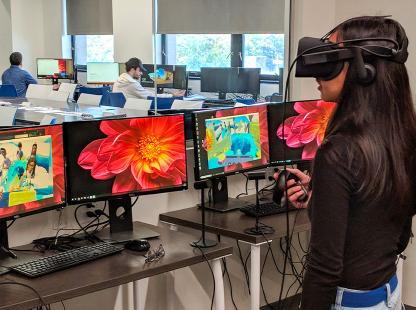
Human Computer Interaction
Human-computer interaction (HCI) is a multidisciplinary field of study that focuses on how people interact with technology. This technology can range from physical artifacts such as sensors and wearable devices, to networked systems such as social media and online communities and algorithms (such as AI and generative AI). HCI can be applied to almost all aspects of society, in domains such as computer-supported collaborative work, health, education, security/privacy, music, cyberpsychology, social computing and entertainment using qualitative, quantitative and data visualization methods.. The field also includes the study of technology use with special populations to examine accessibility and inclusive technology. This work is frequently published in top-tier venues such as ACM CHI, ACM CSCW, ACM ASSETS, TVCG and IEEE VIS.








